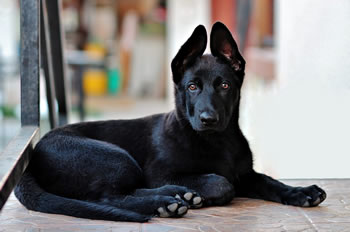Guest Post by Bernie the Boxer
Relocating is exciting, but it is a lot of work. Not only do you have to work with a real estate agent to find a new place, but you also have to help your family adjust to the changes that lie ahead. One family member that may have a particularly difficult time is your dog. He doesn’t really know what is going on, but he can sense that there is a big adjustment coming up. Dogs can pick up on human distress and start to experience it themselves. As they struggle with these feelings of anxiety and not knowing what is coming, they may start to show destructive behaviors as a reaction.
These behaviors include:
- Excessive licking of self or others.
- Chewing on furniture, shoes, or other non-chew toy items.
- Barking at inappropriate times.
- Howling at night or when separated from owners.
- Digging holes in the yard.
- Going to the bathroom indoors.
- Hiding from owners.
- Darting out the door or digging holes under fences to escape.
- Pacing nervously.
If you want to help prevent your dog’s anxiety as you move and make the transition as comfortable as possible for him, take these following precautions into account. By finding the right place that fits your pup’s needs, sheltering him during moving upheaval, and taking the time to help him acclimate to your new place, you can make moving easier for your dog.
House Hunting for Your Dog
When you are looking at new places, you want to see homes or apartments that are big enough for your dog. Chances are, your old home is about the right size. Most people who adopt dogs choose a breed based on their current lifestyle and their amount of living space. However, if your dog has grown more than expected and could use additional space for comfort, now is the perfect time to find a place with all the room he needs.
Of course, a bigger house isn’t right for all dogs. Smaller breeds and older dogs have a harder time getting around, so it behooves you to look at places where they won’t feel overwhelmed by the square footage. Older dogs also have a difficult time navigating stairs, so if your pup is senior aged and has trouble moving around, either look for one-story homes or consider installing a ramp over steps.
Sheltering Your Dog on Moving Day
Movers, boxes, and packing peanuts are all things that bring unfamiliar noises, sights, and smells that can stress out your dogs. On moving day, consider boarding your pet or putting him in doggy daycare so he is safe and sheltered. The professionals working at boarding places can give your dog special attention and provide plenty of play time so he can enjoy the day, rather than be full of anxiety as all his familiar surroundings change. Once everything is packed up and ready, you can pick up a happy and exhausted dog.
Helping Your Dog Acclimate
Once you’ve arrived at the new place, spend some time showing your dog around so he can get comfortable. Show him the backyard, where his food and water bowls are, as well as his “space.” Establish an area at home just for him with his bed and favorite toys. This can be his area to escape to when he is feeling stressed for peace and quiet.
If there are areas where your dog is not allowed, block them off immediately and establish those boundaries. He will have an easier time following instructions if you are consistent. Furthermore, for the first few days (even weeks), monitor your dog during play time in the backyard. He may use this time to check the fence for weak spots and try to get out, so watching for that behavior can help prevent an escape.
***
With all that goes on throughout the moving process, do not neglect your dog’s needs. Finding the right-sized house depends on your dog’s needs, so pick a place that gives him enough space to play while not being too big to navigate. On the day of moving, consider boarding your dog so he can be safe and play while you are hard at work. Finally, once in the new place, take the time to help him acclimate to the environment. Eventually, your dog will see his new home as a safe space and be as happy as you are.

